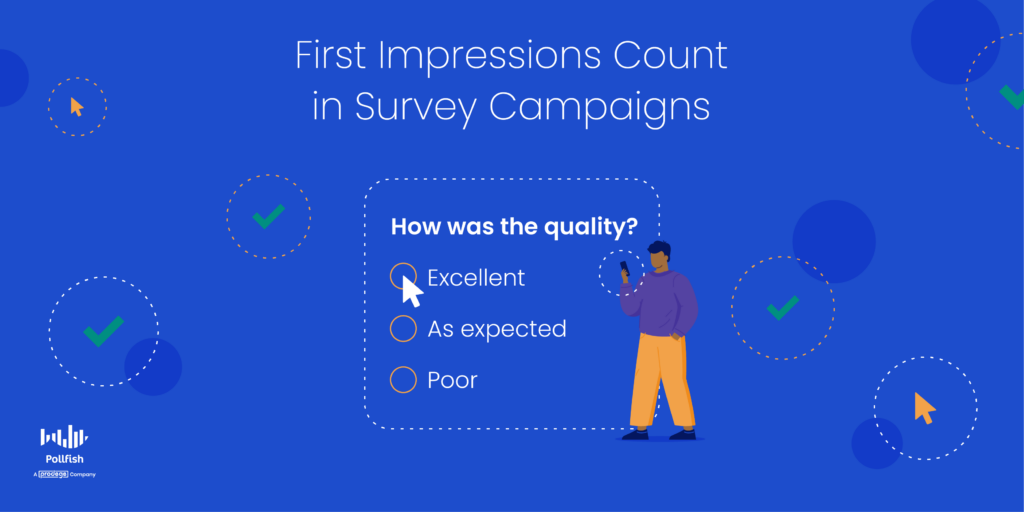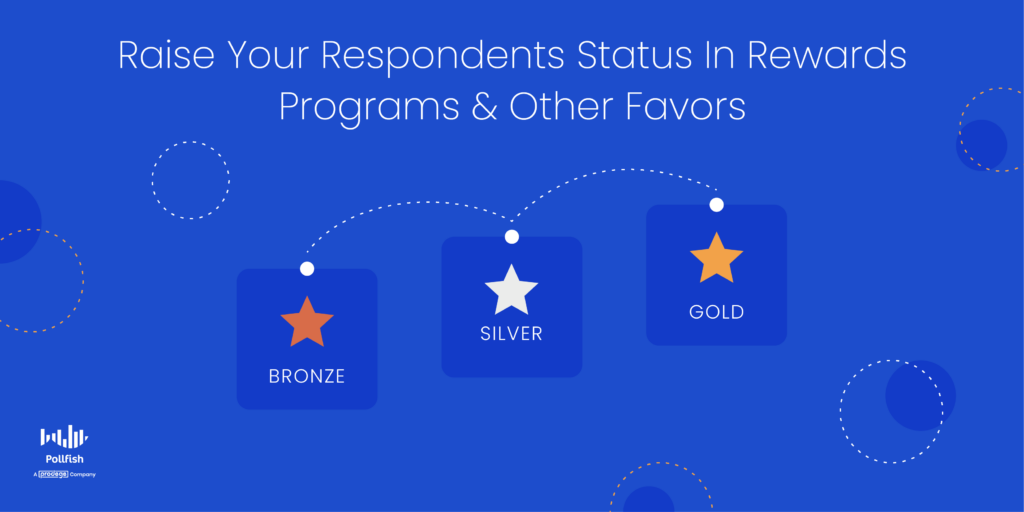How to Get Survey Responses to Complete Your Market Research Needs

When dealing with online surveys, you’ll surely ask yourself how to get survey responses, or at least, how to get more survey responses.
We hear you! Any market research campaign needs a particular amount of surveys for statistical relevance and to lessen the margin of error.
However, survey response rates still tend to be on the lower end of the scale, as the current survey response rates are at about 30%. Thus, there is clearly work that needs to be done to increase this rate so that you can reach a suitable number of survey responses.
However, despite the rather low amount of respondents that take a survey, surveys are still popular — for both researchers and their target audiences.
Online surveys in particular, are a popular route for conducting market research. Both researchers and survey respondents can attest to this.
For example, 71.6% of respondents prefer to answer a survey online. Thus, you should consider updating your market research methods by using online surveys.
This article guides you how to get survey responses so that you get an adequate amount of completed surveys to aid any research campaign.
How to Get Survey Responses Via 2 Survey Distribution Methods
Before we discuss how to increase your survey responses, please note that we are providing this advice for those who use our Distribution link feature.
This feature gives you more freedom when it comes to posting surveys online, as you get to choose where to post the link for people to take your survey, as well as who gets to take your survey, if you’re thinking of sending it to specific people.
This method is one of our major two; the other involves our Random Device Engagement (RDE) method of distributing surveys. With RDE, our platform sends surveys to a massive network of online properties, such as websites and apps.
The surveys target people randomly, given that RDE runs on organic sampling. That means there is no prerecruitment, which you would find in a survey panel. Instead, the platform targets random people who voluntarily exist in a particular digital space.
We target over 250 million people in over 160 countries to gain your respondent pool. Following agile research, this method keeps iterating surveys until the designated amount of respondents have completed their survey.
Thus, you don’t need to worry about getting survey responses via this method. However, if you send surveys your own way, that is, with the Distribution Link feature, you’ll need to have a solid plan on how to get survey responses, especially if you seek a certain number of responses within a certain time.
Fortunately, we provide several tips on how to get more survey responses.
Draw in Responses with a Strong Survey Intro
First responses matter and this applies in survey participation as well. That’s why you’ll need to reel in interest to your survey as soon as you can.
This entails compelling your potential respondents to take your survey as soon as they come upon your survey.
Everyone sets up their survey differently. Yours may exist as a pop-up, while others may position it right below a large image.
Regardless of the form of the call-out you use to grab people’s attention to take your survey, you’ll need to supply it with a strong introduction. This must be interesting, compelling and show respondents why the survey is important and why their participation matters.

As such, use short and snappy survey titles and call-outs.
To ease anyone’s dread, you may want to consider adding the time it takes to complete the survey in your title or introduction.
This is to reassure your respondents from the onset that the survey won’t take much of their time.
It’s also useful to add the purpose of the survey title and introduction, especially when it relates to helping the respondents themselves.
Example text: “Take this quick 3-minute survey to help brands serve you better!”
Create a Survey with Survey Best Practices
You should never just wing it when it comes to producing surveys; instead, apply the best practices for surveys each time you create a survey.
These will ensure you provide a good survey experience for the respondents, as well as receive the key data that you need for your market research campaigns.
While you can’t please everyone, several survey best practices are tried and true. The following provides several best practices you should consider for your surveys:
- Keep your questionnaire short.
- Many are time-poor and no one wants to waste their time.
- Keeping the questioning short will prevent respondents from leaving your survey before completing it. In this way, you’ll prevent or at the very least minimize survey attrition.
- Some respondents won’t even begin your survey if it’s too long.
- Remove any ambiguity from your questions.
- Surveys aren’t a knowledge test for school. As such, your questions should be easy to understand and answer.
- Avoid any confusion and be as direct as possible.
- When questions are difficult to answer, respondents will be bent on leaving the survey or getting bored quickly.
- Mix and match question types to retain interest throughout the survey-taking process.
- You can ward off respondents from getting bored by using a variety of question types and formats.
- Use questions such as: Likert scale questions, Matrix questions, stars and emoji scales, bipolar questions, drill-down questions and more.
- Make sure the survey platform you use allows you to do so.
- Find an adequate time to send your survey.
- This will depend on the lifestyles and habits of your target market.
- You can determine this by conducting a target market analysis to see when your target audience has more time in their day, when they go online, etc.
- Also, there are some general times and moments in the customer journey determined to be the best time to send a survey.
- Thank the respondents and follow up.
- Include a thank you page in your survey to give thanks to respondents for their time and consideration.
- You can also do so in advance by thanking respondents in the intro of the survey.
- Follow up with respondents whose contact information you have. There are many ways to go about this, including with the results of the survey, to thank them and more.
Strengthen Interest with Survey Incentives
Another strong approach to getting survey responses is to reward the respondents with survey incentives.
These incentives can be either monetary or nonmonetary and you can get creative with your incentives to stand apart from your competitors.
This is especially important when your survey states your brand or displays its logo or any other likeness. That’s because using incentives shows generosity and care, thereby positioning your brand in a good light.
After all, your respondents will know which company they are dealing with. Thus, you should consider using incentives to frame your brand in the best possible way. Survey incentives will do this, as they prove to respondents that you truly care about their participation. Otherwise, why would you reward them with incentives?
On the contrary, if respondents see your business on your survey and it doesn’t offer incentives, this will lead to a negative impression of your brand, even if the respondents are longtime customers.
That’d because no one owes you any feedback, regardless of how critical it may be. Thus, use incentives when possible, especially in instances where respondents know your business is running the survey.
Do a Favor for Your Respondents
This is especially useful if you know your respondents or have their contact information.
Doing favors closely ties in with incentives, but it is different in that favors can be anything aside from small benefits (like extra lives on a mobile game that respondents played upon encountering your survey) or gifts.

Favors can consist of doing anything favorable for your respondents. There are many routes you can take with factors, such as the following:
- Promise to give respondents a discount on your products or services.
- Offer a discount on top of an already discounted purchase.
- Enter them into a sweepstake to win a big prize.
- Raise their status if they are in a rewards program.
- Give them a preview of one of your new offerings.
As you can see, there are many kinds of favors you can offer your respondents to lure them into taking your survey.
At times, you may want to give some kind of proof of the favor you promised, such as a coupon that only goes into effect after respondents complete their survey.
Remember that what truly differentiates favors from incentives is that favors are grander and are more long-term-oriented gifts and gestures.
Use Your Content to Motivate Respondents
The content your business puts into the world has various benefits, but did you know that you can use it to encourage people to take your survey?
Not all content assets are easily accessible. That’s where you can use them to incite respondents to take your survey. This is especially true with gated content.
Content that’s gated often involves collecting users’ information in order for them to view it. In this scenario, you can require your users to take your survey to gain access to your gated content.
This is fair, given that both parties will get something in return. In addition, your site visitors won’t have to pay anything or get a membership to view the content they need, they’ll just need to take a survey.
Using gated content is especially useful for B2B matters and campaigns and therefore, B2B surveys.
Aside from granting users entry to gated text-based content, you can also gain more survey responses by giving them access to video content. Videos tend to draw in more views and engagement then text, especially in the era of Tik Tok and short attention spans.
Getting the Right Amount of Survey Participation
Getting the right amount of survey responses is never a feat with the right online survey platform. Such a platform will allow you to research all your targeted respondents in various ways, like the aforementioned RDE method and via the Distribution Link.
With the former, you won’t ever have to worry about survey responses, as the platform will keep sending surveys across the internet until your preset number of completed survey responses is fulfilled.
With the latter option, it’s best to follow our advice on how to get more survey responses. However, even in this method, our survey platform will keep iterating until the requisite number of completed surveys is reached.
Thus, your survey is in good hands regardless of the distribution route you take when you use Pollfish.
You should also consider that a strong survey platform will grant you all the functionalities necessary to build a good survey campaign, one that draws in interest and gets respondents to complete the survey.
Pollfish survey software allows you to create a thorough survey data collection, one you can customize to your liking, view however you please and organize to the max.
In addition, with our vast array of question types, you can create virtually any type of survey to aid your research campaigns.
Researchers can leverage a wide breadth of information on their respondents by accessing a wide pool of insights in their survey results dashboard.
In addition, we also offer the advanced skip logic feature, which routes respondents to relevant follow-up questions based on their answers to a previous question.
Thanks to our advanced market research platform, getting survey responses is highly attainable and easy on Pollfish.
Pollfish Marketing Team
Ready to Try Pollfish?
Create your survey with AI, target high-quality respondents starting at $0.95 per complete, and start getting results in just minutes in real-time. From running a simple product concept survey to managing a constant stream of trackers for dozens of clients in dozens of countries, we’ve got you.
